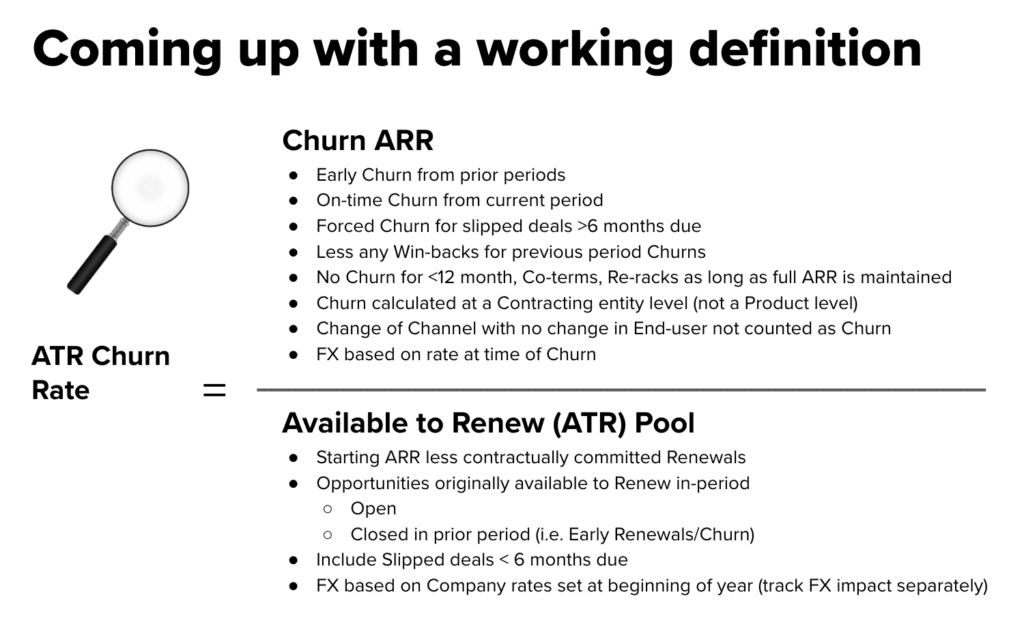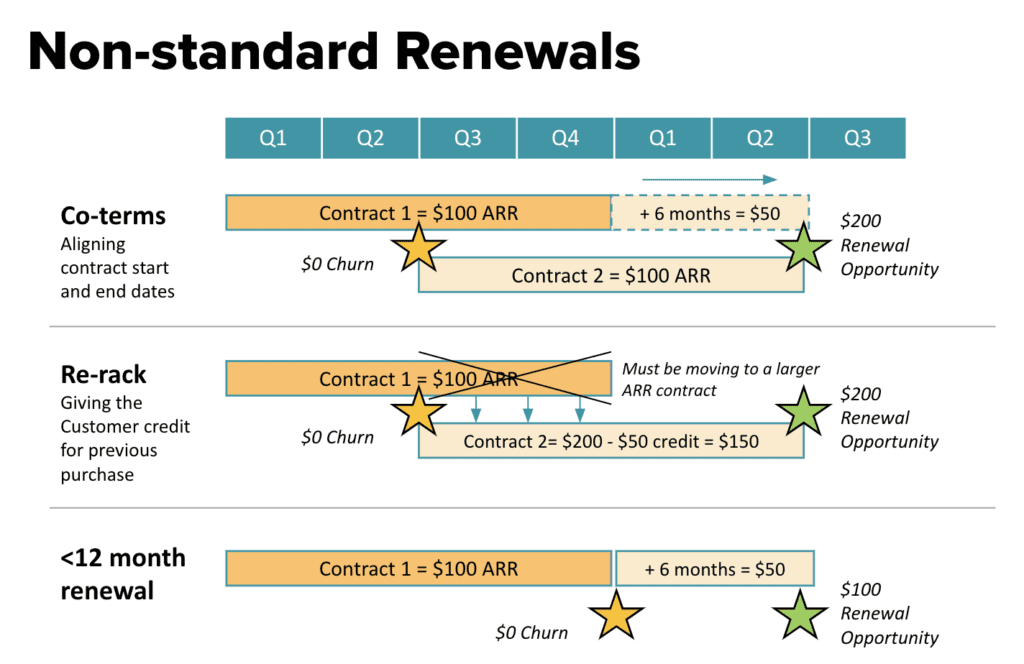Reducing churn in SaaS, along with increasing new ARR is the backbone of growing your business. In this guide, Andrea Webb, the SVP of Customer Success & Retention at Solarwinds, and Tim Willey, the SVP of Commercial Strategy & Operations at ForgeRock, share their tips for understanding and combating churn.
Rule 1 – Customer vs. ARR Churn
When you set out to track your churn, it’s vital to pick the correct metric. Often, multiple churn measurements are lumped together, and it’s important to differentiate the areas you are measuring:
- Customer Churn: This measures how many customers you lose.
- ARR Churn: This measures how much ARR (Annual Recurring Revenue) you lose.
Rule 2 – ARR ≠ ATR Churn
ATR (Available To Renew) churn is calculated by dividing the amount of ARR lost by the starting dollar amount of the ATR pool. Tim says ForgeRock chooses to focus primarily on ATR when it comes to measuring their churn.
Available to Renew Churn = $ ARR Lost/Starting $ ATR Pool

Rule 3 – Timing of Churn
Timing is everything, especially when it comes to subscription-based SaaS models. Tim shared his rules to accurately measure churn for larger enterprises over a chosen period of time:
- Allow slipped renewals for up to 6 months
- > 6 months due = Forced Churn
- > 6 months booked = Win-back (Negative Churn)
- Tim recommends counting churn in the period in which it is due.
- Tim warns not to allow pull-ins to offset churn in the period.
Rule 4 – Understanding Non-Standard Renewals: < 12-Month Bookings
One strategy to capture renewals is to allow your clients to book for under 12 months and working with them to shorten the next year’s contract.
Rule 5 – Understanding Non-Standard Renewals: Co-Terms
This renewal strategy involves aligning contract start and end dates. For example, maybe a certain customer starts a second contract in conjunction with their current contract.
Rule 6 – Understanding Non-Standard Renewals: Re-Racks
Tim explains this as giving the customer credit for previous purchases or contracts and re-working them into a new, agreed upon contract.
Rule 7 – Defining Churn: Soft Churn
Temporary ARR reductions can happen, and it can be challenging to know whether it’s true churn.
- ARR Impact > 6 months → Churn
- ARR Impact < 6 months → Not Churn
Rule 8 – Defining Churn: Change in Product
In this case, Tim says that there is no Gross Churn or ATR Churn. Tim suggests tracking the Product Churn instead.
Rule 9 – Defining Churn: Change in Channel
Tim says that if a channel partner changes, there is no churn.
Rule 10 – Understand the FX Impact
When calculating your ATR Churn Rate, be mindful of your FX impact with respect to specific metrics.
- Churn ARR: FX is based on the rate at the time of the churn.
- ATR Pool: FX is based on company rates set at the beginning of the year. FX impact should be tracked separately.
Key Takeaways:
- Build a working definition of churn and update with corner cases based on your ongoing learnings.
- Focus on understanding underlying business dynamics for your company.
- Use this to track reasons for churn, address early and build predictably.


